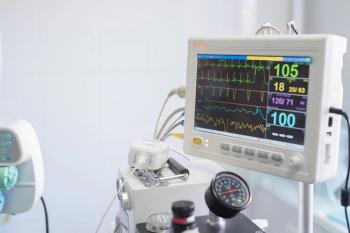
Pelvic floor physiotherapy for endometriosis
A prospective study in the journal Ultrasound in Obstetrics & Gynecology has found that women treated with pelvic floor physiotherapy showed a significant improvement in pelvic floor relaxation, superficial dyspareunia and chronic pelvic pain, in comparison to women who did not receive treatment.
Simona Del Forno, MD, PhD, a consultant in ob/gyn in the Gynecology and Human Reproduction Physiopathology Unit of St. Orsola University Hospital in Bologna, Italy, was the principal investigator. She said that she expected to find an improvement in superficial dyspareunia, defined as pain during sexual intercourse occurring in or around the vaginal entrance, because they had previously studied and demonstrated the association of this symptom with pelvic floor muscle hypertonia. “What surprised me, though, was the improvement in chronic pelvic pain, because of the complex physiopathology of the symptom and the difficulties in treating,” she said.
The inspiration for the study came from Del Forno’s clinical practice, where she noticed that many women with endometriosis suffered from pain during sexual intercourse, which was often not completely relieved by traditional therapies, either medical or surgical, and was frequently associated to pelvic floor muscle hypertonia.
The primary aim of the study was to evaluate the effects of pelvic floor physiotherapy on changes in the area of the levator ani muscle hiatus under the Valsalva maneuver via 3D/4D transperineal ultrasound in women with deep infiltrating endometriosis suffering from superficial dyspareunia.
The randomized controlled trial equally divided 34 nulliparous women diagnosed with deep infiltrating endometriosis and associated superficial dyspareunia to 1 of 2 groups: 5 individual sessions of pelvic floor physiotherapy of 30 minutes each at weeks 1, 3, 5, 8 and 11 (study group, n = 17) and no intervention (control group, n = 17).
Baseline and 4-month follow-up measurements of pain symptoms and transperineal ultrasound were compared. During both ultrasound examinations, the levator hiatal area was measured at rest, upon maximum pelvic floor muscle contraction and maximum Valsalva maneuver.
Of the 30 women who completed the study and were included in the analysis (study group, n = 17; control group: n = 13), the percentage change in levator hiatal area at maximum Valsalva maneuver was higher in the study group than in the control group: 20.0 vs. -0.5 (P = 0.02).
The change in the Numerical Rating Scale (NRS) score of superficial dyspareunia was also higher in the study group than in the control group: median interquartile range -3 (-4, -2) vs. 0 (0, 0), respectively (P < 0.01).
In addition, the second examination revealed significant differences between the two groups in chronic pelvic pain changes: median interquartile range 0 (-2,0) in the study group vs. 0 (0,1) in the control group (P = 0.01).
“I believe that in women with endometriosis suffering from chronic pelvic pain, the use of multiple therapeutic strategies, including pelvic floor physiotherapy, may be the key to success,” Del Forno told Contemporary OB/GYN. “Pelvic floor physiotherapy may represent an additional valid, minimally invasive, innovative, and well-tolerated therapeutic option for women with endometriosis, in the modern perspective of a tailored and multidisciplinary therapeutic strategy.”
The study group scheduled individual sessions of physiotherapy with the same physiotherapist and the same clinical group. “We dedicated time, without any rush, in a quiet space to make all women feel comfortable,” Del Forno said. “I believe this environment may have contributed to the success of the study and to the high levels of women’s satisfaction and compliance with the physiotherapy.”
3D/4D transperineal ultrasound might also be a viable noninvasive method to assess pelvic floor muscles in these women, according to Del Forno.
The study authors plan to confirm results in a larger group of women and to assess long-term the maintenance of outcomes. “We also aim to extend the clinical use of pelvic floor physiotherapy in women with other gynecological diseases suffering from dyspareunia,” Del Forno said.
__
Del Forno reports no relevant financial disclosures.
Source
Del Forno S, Arena A, Pellizzone V, et al. Assessment of pelvic floor muscles with 3D/4D transperineal ultrasound in women with deep infiltrating endometriosis and superficial dyspareunia treated with pelvic floor muscle physiotherapy: a randomized controlled trial.
Ultrasound Obstet Gynecol. Published online January 11, 2021. doi:10.1002/uog.23590
Newsletter
Get the latest clinical updates, case studies, and expert commentary in obstetric and gynecologic care. Sign up now to stay informed.
















